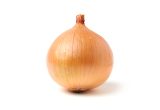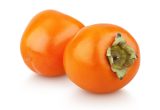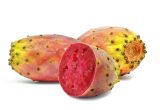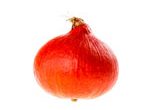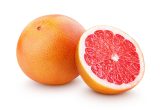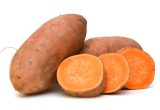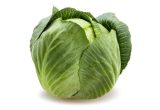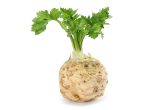Hazelnut

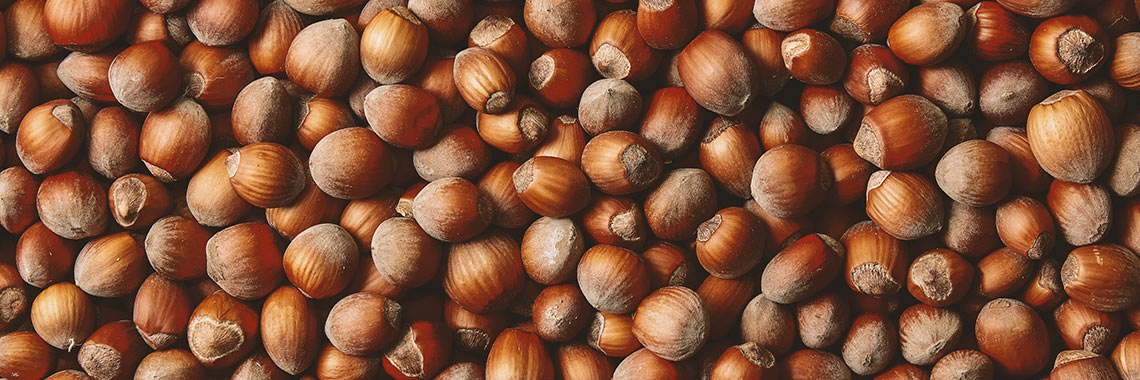
Description
- The hazelnut tree (Corylus avellana L.) belongs to the Betulaceae family.
- It is a shrub up to 8 m tall, with smooth reddish or greyish-brown bark (Gras, 2018).
- The fruit of this shrub is the hazelnut (Gras, 2018).
- The most common varieties of hazelnuts found on our shelves are Italian and Turkish (Mollica, 2018).
PHYSICAL AND ORGANOLEPTIC CHARACTERISTICS
- The hazelnut measures about 2 cm (Gras, 2018).
- One study found the presence of 22 key aromatic compounds in raw hazelnuts (Kiefl, 2013), while, in the samples roasted at 130 °C and 160 °C, 79 and 102 volatile compounds were identified respectively (Marzocchi, 2017).
- The aromatic potential of hazelnuts is guaranteed by the main odorants responsible for the:
- malt and butter notes: 2- and 3-methylbutanal, 2,3-butanedione and 2,3-pentanedione;
- earthy notes: methylpyrazine, 2-ethyl-5-methyl pyrazine and 3 -ethyl-2,5-dimethyl pyrazine);
- caramel and musty notes: 2,5-dimethyl-4-hydroxy-3 (2H) -furanone – furanol and acetyl pyrrole (Rosso, 2018)
COMPOSITION CHARACTERISTICS (excluding macronutrients, vitamins and minerals)
- Eleven phenolic compounds have been identified in fresh and roasted hazelnuts, corresponding to diarylheptanoid derivatives, flavonoid O-glycosides and ellagic acid. Moreover, the antioxidant activity of these compounds was measured: ellagic acid and flavonoid derivatives appear to possess the highest free radical scavenging activity (Cerulli A, 2018).
- Thanks to its nutritional profile, and particularly its lipid profile, the US Food and Drug Administration (USDA) has recognised hazelnut as a “heart-healthy” food (Napolitano, 2018).
- Hazelnuts are thought to be protective against neurochemical changes induced by β-amyloid peptides and alteration of metabolic activities induced by a high-fat diet (Mollica, 2018).
- A study has highlighted the role of the environment on the composition of the hazelnut. The results showed that Turkish hazelnut had higher concentration of phenolic acids, flavonoids, antioxidant capacity and enzyme inhibition properties and lower concentration of saturated fatty acids than the Italian sample (Mollica, 2018).
RAW
The following values are approximate and depend on variety, season, ripeness, cultivation conditions, etc.
Raw hazelnut provides an average of 622 kcal per 100 g, i.e. 2560 kJ. A portion of hazelnut weighs an average of 30 g, which represents an energy intake of 186.60 calories (kcal) approximately.
COMPOSITION TABLES
For each nutrient, the tables provide information on the content, minimum and maximum values for 100 g net of raw hazelnuts, while the percentage of Dietary Reference Values (DRVs) is calculated for a 30 g portion.
MACRONUTRIENTS
| Constituent (g) |
Average content
per 100g |
Min-Max per 100g |
Average content
per 30g |
DRV% * |
|---|---|---|---|---|
| Water | 7,30 | 4,85 - NC | 2,19 | - |
| Fibers | 11,60 | 9 - NC | 3,48 | - |
| Carbohydrates | 7,16 | - | 2,15 | 0,83 |
| Sugars | 4,90 | 4,34 - NC | 1,47 | 1,63 |
| Lipids | 56,90 | NC - 61,50 | 17,07 | 24,39 |
| Saturated fat | 4,75 | 4,46 - NC | 1,43 | 7,13 |
| Protein | 17 | NC - 19 | 5,10 | 10,20 |
| Constituent (g) | Amount | Min-Max | DRV% |
|---|---|---|---|
| Water | Ciqual 2020 | - | - |
| Fibers | Ciqual 2020 | - | - |
| Carbohydrates | Ciqual 2020 | - | Règlement (UE) N°1169/2011 du parlement Européen et du conseil du 25 octobre 2011 |
| Sugars | Ciqual 2020 | - | Règlement (UE) N°1169/2011 du parlement Européen et du conseil du 25 octobre 2011 |
| Lipids | Ciqual 2020 | - | Règlement (UE) N°1169/2011 du parlement Européen et du conseil du 25 octobre 2011 |
| Saturated fat | Ciqual 2020 | - | Règlement (UE) N°1169/2011 du parlement Européen et du conseil du 25 octobre 2011 |
| Protein | Ciqual 2020 | - | Règlement (UE) N°1169/2011 du parlement Européen et du conseil du 25 octobre 2011 |
Zoom on carbohydrates
- For a 30 g serving, hazelnuts contain 2.15 g of carbohydrates.
- This content corresponds to 7.16 g of carbohydrates per 100 g. It is below the average amount found in nuts (18.13 g per 100 g).
- Hazelnut is low in sugar* (4.90 g per 100 g) as it contains no more than 5 g per 100 g.
Zoom on fibres
- Hazelnuts are source of fibre* as they provide more than 1.5 g of fibre per 100 kcal.
- This amount is higher than the average quantity found in nuts (9.32 g per 100 g).
- According to the Ciqual 2020 table, hazelnuts are among the nuts with the highest fibre content.
- For a 30 g serving, the amount of fibre is 3.48 g.
Zoom on proteins
- Its protein content is 5.10 g for a 30 g portion.
- This amount corresponds to 17 g per 100 g and is close to the average quantity found in nuts (16.73 g per 100 g).
Zoom on lipids
- Hazelnuts provide mainly fat, at 56.90 g per 100 g, which is higher than the average amount found in nuts (41.27 g per 100 g).
- Its composition is of interest from a nutritional point of view, since it provides mostly oleic acid (43.40 g per 100 g), a monounsaturated fatty acid, and polyunsaturated fatty acids (5.40 g per 100 g).
- Hazelnuts contain 17.07 g of fat in a 30 g serving.
* Regulation (EC) No 1924/2006 of the European Parliament and of the Council of 20 December 2006 on nutrition and health claims made on foods.
MINERALS AND TRACE ELEMENTS
| Constituent |
Average content
per 100g |
Min-Max per 100g |
Average content
per 30g |
DRV% * |
|---|---|---|---|---|
| Calcium (mg) | 120 | 112 - NC | 36 | 4,50 |
| Chloride (mg) | 30,80 | - | 9,24 | 1,16 |
| Copper (mg) | 1,70 | NC - 1,80 | 0,51 | 51 |
| Iron (mg) | 3 | NC - 4,80 | 0,90 | 6,43 |
| Iodine (µg) | < 20 | - | 6 | - |
| Magnesium (mg) | 160 | 159 - 170 | 48 | 12,80 |
| Manganese (mg) | 3,30 | NC - 6,50 | 0,99 | 49,50 |
| Phosphorus (mg) | 340 | 280 - NC | 102 | 14,57 |
| Potassium (mg) | 860 | 668 - NC | 258 | 12,90 |
| Selenium (µg) | < 20 | - | 6 | - |
| Sodium (mg) | < 5 | - | 1,50 | - |
| Zinc (mg) | 2,30 | NC - 2,50 | 0,69 | 6,90 |
| Constituent | Amount | Min-Max | DRV% |
|---|---|---|---|
| Calcium (mg) | Ciqual 2020 | - | Règlement (UE) N°1169/2011 du parlement Européen et du conseil du 25 octobre 2011 |
| Chloride (mg) | Ciqual 2020 | - | Règlement (UE) N°1169/2011 du parlement Européen et du conseil du 25 octobre 2011 |
| Copper (mg) | Ciqual 2020 | - | Règlement (UE) N°1169/2011 du parlement Européen et du conseil du 25 octobre 2011 |
| Iron (mg) | Ciqual 2020 | - | Règlement (UE) N°1169/2011 du parlement Européen et du conseil du 25 octobre 2011 |
| Iodine (µg) | Ciqual 2020 | - | Règlement (UE) N°1169/2011 du parlement Européen et du conseil du 25 octobre 2011 |
| Magnesium (mg) | Ciqual 2020 | - | Règlement (UE) N°1169/2011 du parlement Européen et du conseil du 25 octobre 2011 |
| Manganese (mg) | Ciqual 2020 | - | Règlement (UE) N°1169/2011 du parlement Européen et du conseil du 25 octobre 2011 |
| Phosphorus (mg) | Ciqual 2020 | - | Règlement (UE) N°1169/2011 du parlement Européen et du conseil du 25 octobre 2011 |
| Potassium (mg) | Ciqual 2020 | - | Règlement (UE) N°1169/2011 du parlement Européen et du conseil du 25 octobre 2011 |
| Selenium (µg) | Ciqual 2020 | - | Règlement (UE) N°1169/2011 du parlement Européen et du conseil du 25 octobre 2011 |
| Sodium (mg) | Ciqual 2020 | - | - |
| Zinc (mg) | Ciqual 2020 | - | Règlement (UE) N°1169/2011 du parlement Européen et du conseil du 25 octobre 2011 |
Zoom on minerals and trace elements
- Hazelnut is high in:
- copper because it provides the equivalent of 51% of DRVs, i.e. 0.51 mg for a 30 g portion;
- manganese because it provides the equivalent of 49.50% of DRVs, i.e. 0.99 mg for a 30 g portion.
- It also contains significant levels of phosphorus, potassium and magnesium as it provides the equivalent of:
- 14.57% of DRVs for phosphorus, i.e. 102 mg for a 30 g portion;
- 12.90% of DRVs for potassium, i.e. 258 mg for a 30 g portion;
- 12.80% of DRVs for magnesium, i.e. 48 mg for a 30 g portion.
- The other minerals and trace elements are present in smaller quantities in hazelnuts, since they cover less than 7% of DRVs in a 30 g portion.
VITAMINS
| Constituent |
Average content
per 100g |
Min-Max per 100g |
Average content
per 30g |
DRV% * |
|---|---|---|---|---|
| Provitamin A Beta-carotene (µg) | 15,90 | 0 - 21 | 4,77 | - |
| Vitamin A equivalent (µg) | 2,65 | 0 - 3,50 | 0,80 | 0,10 |
| Vitamin B1 (mg) | 0,35 | NC - 0,66 | 0,11 | 9,55 |
| Vitamin B2 (mg) | 0,088 | NC - 0,12 | 0,03 | 1,89 |
| Vitamin B3 (mg) | 0,71 | NC - 1,90 | 0,21 | 1,33 |
| Vitamin B5 (mg) | 1,64 | 0,90 - NC | 0,49 | 8,20 |
| Vitamin B6 (mg) | 0,21 | NC - 0,58 | 0,06 | 4,50 |
| Vitamin B9 (µg) | 65,20 | NC - 133 | 19,56 | 9,78 |
| Vitamin C (mg) | < 0,50 | NC - 7 | 0,15 | - |
| Vitamin E (mg) | 16,30 | 5,65 - NC | 4,89 | 40,75 |
| Vitamin K1 (µg) | < 0,80 | NC - 20,70 | 0,24 | - |
| Constituent | Amount | Min-Max | DRV% |
|---|---|---|---|
| Provitamin A Beta-carotene (µg) | Ciqual 2020 | - | - |
| Vitamin A equivalent (µg) | Calcul à partir de la valeur Provitamine A Béta-carotène* | - | Règlement (UE) N°1169/2011 du parlement Européen et du conseil du 25 octobre 2011 |
| Vitamin B1 (mg) | Ciqual 2020 | - | Règlement (UE) N°1169/2011 du parlement Européen et du conseil du 25 octobre 2011 |
| Vitamin B2 (mg) | Ciqual 2020 | - | Règlement (UE) N°1169/2011 du parlement Européen et du conseil du 25 octobre 2011 |
| Vitamin B3 (mg) | Ciqual 2020 | - | Règlement (UE) N°1169/2011 du parlement Européen et du conseil du 25 octobre 2011 |
| Vitamin B5 (mg) | Ciqual 2020 | - | Règlement (UE) N°1169/2011 du parlement Européen et du conseil du 25 octobre 2011 |
| Vitamin B6 (mg) | Ciqual 2020 | - | Règlement (UE) N°1169/2011 du parlement Européen et du conseil du 25 octobre 2011 |
| Vitamin B9 (µg) | Ciqual 2020 | - | Règlement (UE) N°1169/2011 du parlement Européen et du conseil du 25 octobre 2011 |
| Vitamin C (mg) | Ciqual 2020 | - | Règlement (UE) N°1169/2011 du parlement Européen et du conseil du 25 octobre 2011 |
| Vitamin E (mg) | Ciqual 2020 | - | Règlement (UE) N°1169/2011 du parlement Européen et du conseil du 25 octobre 2011 |
| Vitamin K1 (µg) | Ciqual 2020 | - | Règlement (UE) N°1169/2011 du parlement Européen et du conseil du 25 octobre 2011 |
Zoom on vitamins
- Hazelnuts are high in vitamin E as they provide the equivalent of 40.75% of DRVs, i.e. 4.89 mg for a 30 g portion.
- According to the data of the Ciqual 2020 table, the hazelnut is, after the sunflower seed and the almond, the nut that contains the most vitamin E.
- The other vitamins are present in smaller quantities, covering less than 10% of DRVs for a 30 g serving.
* Calculation made: Beta-Carotene / 6 + retinol
POLYPHENOLS
| Constituent (mg) |
Average content
per 100mg |
Min-Max per 100mg |
Average content
per 30mg |
|---|---|---|---|
| Flavonoids (mg) | 5,70 | 5,70 - 5,70 | 1,71 |
| of which Flavanols (mg) | 5,70 | 5,70 - 5,70 | 1,71 |
| Total polyphenols | 5,70 | 5,70 - 5,70 | 1,71 |
| Constituent (mg) | Amount | Min-Max |
|---|---|---|
| Flavonoids | Phénol-Explorer version 3.6 Méthode utilisée : Chromatographie | - |
| of which Flavanols | Phénol-Explorer version 3.6 Méthode utilisée : Chromatographie | - |
| Total polyphenols | Phénol-Explorer version 3.6 Méthode utilisée : Chromatographie | - |
Zoom on polyphenols
- Polyphenols are substances with an antioxidant effect.
- Flavanols, a subgroup of flavonoids, are the only phenolic compounds present in hazelnut according to the chromatographic extraction method.
Nutrition and health claims
According to the definitions of nutrition claims as set out in Regulation (EC) No 1924/2006 on nutrition and health claims, and in view of the composition of the hazelnut, the following claims may be used:
NUTRITION CLAIMS OF HAZELNUT
- Low in sugar (100 g of hazelnuts contain no more than 5 g of sugar)
- Source of fibre (100 kcal of hazelnuts provide more than 1.5 g of fibre)
- High in copper (30 g of hazelnuts provide more than 30% of DRVs)
- High in manganese (30 g of hazelnuts provide more than 30% of DRVs)
- High in vitamin E (30 g of hazelnuts provide more than 30% of DRVs)
HEALTH CLAIMS (for a consumption of 30 g of hazelnuts)
Copper
- Copper contributes to:
- maintenance of normal connective tissues,
- normal energy-yielding metabolism,
- normal functioning of the nervous system,
- normal hair pigmentation,
- normal iron transport in the body,
- normal skin pigmentation,
- normal function of the immune system,
- protection of cells from oxidative stress.
Manganese
- Manganese contributes to:
- normal energy-yielding metabolism,
- maintenance of normal bones,
- normal formation of connective tissues,
- protection of cells from oxidative stress.
Vitamin A
- Vitamin E contributes to the protection of cells from oxidative stress.
References
-
Agence nationale de sécurité sanitaire de l’alimentation, de l’environnement et du travail. Table de composition nutritionnelle des aliments Ciqual 2020. Consultée le 27/08/2020 depuis le site internet Ciqual https://ciqual.anses.fr/
- Agence nationale de sécurité sanitaire de l’alimentation, de l’environnement et du travail. Table de composition nutritionnelle des aliments Ciqual pour le calcul des apports nutritionnels CALNUT 2020. Consultée le 22/09/2020 depuis le site internet Ciqual https://ciqual.anses.fr/
- Cerulli A, Napolitano A, Massulo M, Pizza C, Piacente S. LC-ESI/LTQOrbitrap/MS/MSn Analysis Reveals Diarylheptanoids and Flavonol O-glycosides in Fresh and Roasted Hazelnut (Corylus avellana cultivar “Tonda di Giffoni”). Sage Journal. 2018;3(9):1177.
- Gras A, D’Ambrosio U, Garnatje T, Parada M, Vallès J. Spanish inventory of traditional knowledge related to Biodiversity. Food and Environment. 2018(1) : 91-96
- Kiefl J, Pollner G, Schieberle P. Sensomics analysis of key hazelnut odorants (Corylus avellana L. ‘Tonda Gentile’) using comprehensive two-dimensional gas chromatography in combination with time-of-flight mass spectrometry (GC×GC-TOF-MS). J Agric Food Chem. 2013 Jun 5;61(22):5226-35.
- Marzocchi S, Pasini F, Verardo V, Ciemniewska-Żytkiewicz H, Caboni MF, Romani S. Effects of different roasting conditions on the physicochemical properties of Polish hazelnuts (Corylus avellana L. var. Kataloński). LWT. 2017;77:440-8.
- Mollica A, Zengin G, Stefanucci A, Ferrante C, Menghini L, Orlando G, Wakeel OK. Nutraceutical potential of daily Corylus avellana supplements for obesity and associated dysmetabolism. Journal of Functional Foods. 2018;47:562-74.
- Napolitano A, Cerulli A, Pizza C, Piacente S. Multi-class polar lipid profiling in fresh and roasted hazelnut (Corylus avellana cultivar “Tonda di Giffoni”) by LC-ESI/LTQOrbitrap/MS/MSn. Food Chemistry. 2018;269:125-35.
- Neveu V, Perez-Jiménez J, Vos F, Crespy V, du Chaffaut L, Mennen L, Knox C, Eisner R, Cruz J, Wishart D, Scalbert A. (2010) Phenol-Explorer: an online comprehensive database on polyphenol contents in foods. Database, doi: 10.1093/database/bap024. Full text (free access)
- Règlement (CE) N° 1924/2006 du Parlement européen et du Conseil du 20 décembre 2006 concernant les allégations nutritionnelles et de santé portant sur les denrées alimentaires.
- Règlement (UE) N°432/2012 de la Commission du 16 mai 2012 établissant une liste des allégations de santé autorisées portant sur les denrées alimentaires, autres que celles faisant référence à la réduction du risque de maladie ainsi qu’au développement et à la santé infantiles.
- Règlement (UE) n°1169/2011 du Parlement européen et du Conseil du 25 octobre 2011 concernant l’information des consommateurs sur les denrées alimentaires, modifiant les règlements (CE) n°1924/2006 et (CE) n°1925/2006 du Parlement européen et de Conseil et abrogeant la directive 87/250/CEE de la Commission, la directive 90/496/CEE du Conseil, la directive 1999/10/CE de la Commission, la directive 200/13/CE du Parlement européen et du Conseil, les directives 2002/67/CE et 2008/5/CE de la Commission et le règlement (CE) n°608/2004 de la Commission.
- Rosso MC, Liberto E, Spigolon N, Fontana M, Somenzi M, Bicchi C, Cordero C. Evolution of potent odorants within the volatile metabolome of high quality hazelnuts (Corylus avellana L.): evaluation by complete two-dimensional gas chromatography coupled with mass spectrometry. Analytical and bioanalytical chemistry. 2018;410(15):3491-506.




